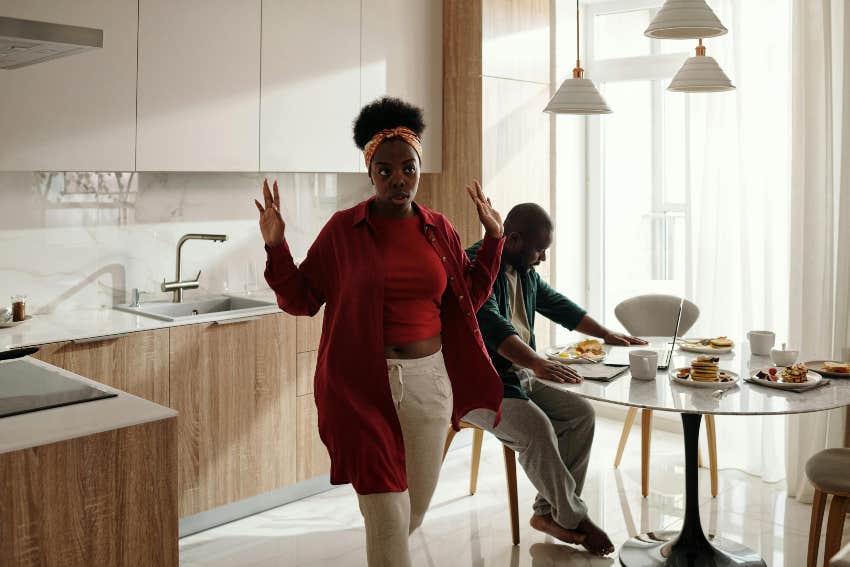What You're Really Like In Relationships, Based On Your Attachment Style
Is your relationship style ruining your own chance at love?
 Andrew Poplavsky | Canva
Andrew Poplavsky | Canva When it comes to relationships, many turn to astrology for guidance. Zodiac signs can help inform you about compatibility, how and why you or your partner act a certain way during certain times, and so on. Personality types can also be a resource when it comes to gaining a deeper insight as to who you are, who your partner is, and who you are together.
There is, however, another way to understand your virtues and vices in relationships: attachment styles. Attachment styles come from attachment theory in psychology. The theory began with John Bowlby, who studied infant attachment, and then continued with Mary Ainsworth with children. More recently, attachment has been studied in adults.
Children’s attachment styles are concerned with their family and early friendships. The way your parents treated you as a child, even as an infant, shapes the way you interact with others and form relationships. For adults, it expands into romantic relationships, as studied by Hazan and Shaver. Childhood has a lot to do with how your style develops, but the end of childhood doesn’t mean your style stops changing.
Your attachment style has everything to do with your behavior and feelings in a relationship as well as who you choose to partner with. It’s important to know your style even before getting into a relationship, as it will help you decide what you need from a potential future partner.
What you'rereallylike in relationships, based on your attachment style:
1. Secure Attachment Style
For those of us who do not fall under this style, this is the one we strive for. If you have a secure attachment style, you are in tune with your partner. You have high emotional intelligence. This means you’re also honest about your feelings. Everyone says communication is key in relationships: in that case, those with a secure attachment style should have the perfect relationship unlocked.
 RDNE Stock project / Pexels
RDNE Stock project / Pexels
But while this attachment style may be ideal, it is not perfect. Everyone has bad days. It’s also likely someone with a secure style is in a relationship with someone of a different style. Communication is a two-way street, so even if one person is completely open, the other might be closed off.
That does not mean the relationship will fail. One with a secure attachment style will understand this, and encourage their partner to try openness. Overall, people with this attachment style are keepers. According to a YouGov poll, 38% of Americans say they have a secure attachment style.
2. Anxious-Preoccupied Attachment Style
In contrast to the secure type which tends to be grounded in relationships, people with this attachment style tend to romanticize love. The beginning of a relationship with this type can be intense, as they will completely throw themselves into the fantasy of the honeymoon phase.
If you have the anxious-preoccupied style and are past that stage of a relationship, you may find you and your partner have problems from time to time, or even more often than normal. Despite your inclination towards fantasy, you can be over-analytical of things your partner says and does.
Ups and downs in your relationship do not mean you’re having a passionate affair worthy of your favorite TV drama. You may be, in the end, a devoted partner craving love and affection, but you need a partner who will understand your needs.
 Diva Plavalaguna / Pexels
Diva Plavalaguna / Pexels
3. Dismissive-Avoidant Attachment Style
This style is, in one word, independent. They do not need to be smothered with attention, nor will they do the same for their partner. Intimacy isn’t their thing, as emotions aren’t their thing, either.
This does not mean they’re constantly closed off; they just like their space. That’s not necessarily a fault, though others may see it as one. Space is important in relationships: you need room to be your people. Dismissive-avoidants just need that much more space.
The reason people with this attachment style are so distant, even in a relationship, is that they are afraid of appearing vulnerable. You don’t want others to know their actions affect you, not even your partner’s. Being in a relationship, however, is major for this type, as they tend to not have many close relationships of any kind.
The way you act in your relationship also depends on your partner and their type. A partner of any different type will challenge you and your inclination toward needing distance.
4. Fearful-Avoidant Attachment Style
This attachment style is filled with inner conflict, which is bound to break out into a relationship. People with this style are deeply in touch with their emotions — but try not to be. They are concerned with trying to maintain a safe distance from their emotions, and by extension, from their partner.
If you have a fearful-avoidant attachment style, your concern with finding the difficult, delicate balance between being too close or too distant from your partner is only a symptom of a deeper issue. You are afraid not necessarily of getting hurt, but of hurting others. Essentially, you are afraid of being a bad partner.
In the end, you’re afraid of being left behind, and it's your fault. People with the fearful-avoidant attachment style, however, are likely not the problem in the relationship, as they can end up in abusive relationships. One of the most common attachment styles is a type of insecure attachment called ambivalent attachment, according to research.
Alison Cerri is a former editorial intern at YourTango and is currently a Publicist at HarperOne Group.

